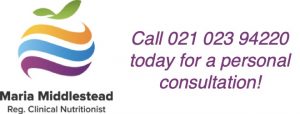The Heart of the Matter
GOOD HEALTH SOLUTIONS (Report 3)
The Heart of the Matter: Significant Strategies For Preventing – and Repairing – Heart, Arterial, Stroke and Other Cardiovascular Damage
With this report discover:
• How one quick and delicious meal per day can diminish high cholesterol; improve arterial and liver function; protect the brain from cognitive decline; and prevent insulin-linked fatigue, obesity and high blood fats.
• The 2 popular snack foods that provide the best cardiovascular health insurance.
• The benefits of all fat types – including saturated – and the best ones to eat for supple arteries, good circulation, and peak mental function.
• The surprising news about muesli bars and muffins, eggs and coconut cream, low-fat milks and cosmetics.
• Why the amount of salt in your food is much less of a threat to blood pressure than low levels of 2 other minerals – which are superbly designed to keep sodium useful, not threatening. Find out their food sources and importantly, how to absorb them effectively.
• How poor digestion, and bacterial and viral infections are strongly linked to cardiovascular disease – and the pre-dinner drink that helps to correct the lot.
• Your arteries are being scraped and injured by ‘sand paper’ unless you eat enough of these micronutrients – plus they also help lower dementia and cancer-risk factors.
• How specific colours of food can stave off disease and help keep you youthful (sorry, M&Ms don’t qualify).
The following is a free preview of this report:
Your Heart: An Owner’s Manual
The human heart beats about 100,000 times a day.
Over an average lifetime this adds up to almost 3 billion sustaining beats. This pulsating power forces blood throughout your body. Without the precious oxygen the blood carries – especially to the brain and heart – you would die in a few minutes.
The heart is about the size of its owner’s closed fist, and shaped like a hollow, upside down pear. It is the muscular centre of the body’s system for distributing nutrients and carting away wastes. This transportation network consists of tiny country-track capillaries feeding into veins and connecting them to arteries, larger lymphatic vessels gathering leaked fluid nourishment from capillaries and returning this to general circulation, major veins heading for the heart, and arterial motorways leading from it to the lungs. From this site fresh oxygen is picked up, carbon dioxide is eliminated and your life is able to continue.
Although a diagnosis of cancer may engender more fear, cardiovascular disease (CVD) is at least as deadly. This umbrella term covers such unpleasant possibilities as heart and arterial damage; stroke, thrombosis or blood clots (technically cerebrovascular disorders if blood vessels to the brain are affected); and peripheral circulatory damage (mostly to limbs) that can lead to amputation, varicose veins or lymphedema (swelling and pain due to excessive fluid build-up and obstruction of lymphatic vessels).
In the industrialised nations the most common form of heart disease is atherosclerosis. Here sticky deposits of cholesterol and fats build up along the arterial wall and restrict blood flow. Arteriosclerosis is when arteries stiffen or thicken and thus narrow the channel for circulation. Often as people age the muscular wall of arteries and smaller arterioles becomes less elastic and unable to relax as swiftly during rhythmic pumping. Blood pressure then increases.
The contraction of the heart is minutely regulated by electrical impulses. The rate at which these occur is controlled by two opposing systems. The sympathetic nervous system (SNS) along with help from adrenal and thyroid hormones act as the accelerator. Meanwhile the parasympathetic nervous system (PNS) aided by the neurotransmitter acetylcholine is the brake. The cardiovascular and nervous systems, endocrine (hormone producing) system, and all neurotransmitters (brain message couriers) must have specific vitamins, minerals, amino acids, fats and glucose to function effectively. Specific food sources will maximise – or cripple – their life-enabling teamwork…


